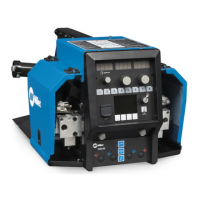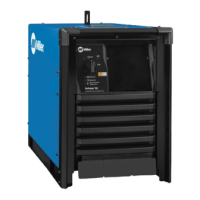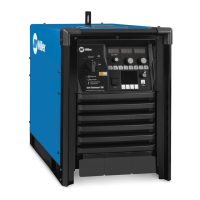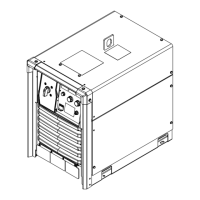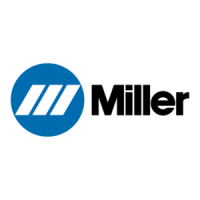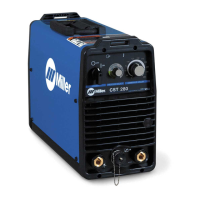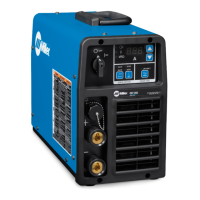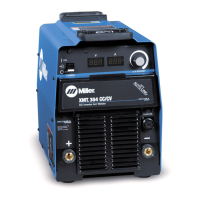OM-291865 Page 35
SECTION 9 – TEACHING
Cobot systems are shipped with all the necessary system configuration installed so end users only need to program the welding that they want
the cobot to perform. This section makes recommendations and outlines the programming structure; this manual is not intended to instruct users
on the operation of the cobot teach pendant and explain the commands used in cobot programs. Please refer to the cobot operations manual for
specific information on using the teach pendant.
It is strongly recommended that new cobot users go through our basic operations training class before attempting to create or
modify programs on the cobot system. The cobot can potentially injure personnel or damage itself if not programmed properly.
9-1. Teach Mode
To teach new programs the cobot must be in Teach Mode. This means the key switch located on the operation box must be set to Teach.
Do not switch the Auto/Teach key switch while the cobot is actively running a program. If you wish to interrupt auto mode operation, press the
Start/Puse button first, then turn the key switch to Teach.
9-2. Pre-Teaching Checks
Any time an operator or programmer has an opportunity to inspect the system is a good time to look for normal wear that may need to be ad-
dressed. This is even more critical when a programmer is in the process of correcting a weld or creating a new program. Failure to check the co-
bot hardware before touching up points could result in lost time.
l Cobot torch alignment—crashes happen and many times no adjustment is needed but it is good programming practice to check the cobot
torch position against a fixed reference point to see if anything has moved since the last time the cobot was programmed. If it has, correcting
the hardware misalignment may solve any welding problems.
l Cables—the torch cable (whip), power cables, and liners sometimes get caught up on equipment. Twisted cables cause short circuits or bro-
ken wires. Welding wire liners forced to bend in a very small radius can keep wire from passing freely through the liner. Replace or service
any cable or liner that is visibly damaged or has reached the end of its useful service life.
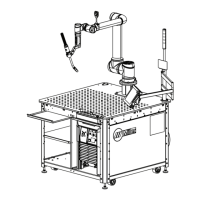
